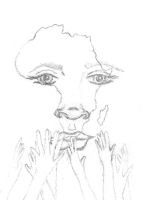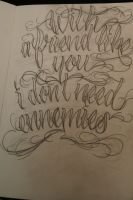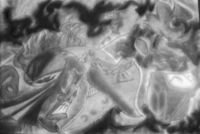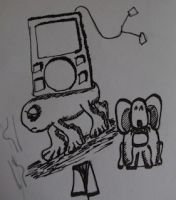Why Sketchbooks Matter to Designers and Illustrators
Sketchbooks for Designers & Commercial Artists have been integral to the lives of designers for centuries. They serve not only as tools for honing skills but also as spaces for innovation, reflection, and growth.
For creatives, sketchbooks are much more than blank pages—they are companions on their artistic journey. In this blog post, we’ll explore why sketchbooks are invaluable, the myriad benefits they offer, and how they shape the creative process for both beginners and professionals.
For designers and commercial illustrators, sketchbooks serve as essential tools for creativity, innovation, and skill development. Unlike personal sketchbooks used for casual exploration, professional sketchbooks are structured workspaces for refining concepts, testing compositions, and solving design challenges.

credit: jarboejennings
A Creative Sanctuary for Professional Development
A sketchbook provides a judgment-free environment, allowing designers and illustrators to experiment with ideas, refine techniques, and take calculated creative risks. It fosters innovation in commercial projects, ensuring new approaches and artistic breakthroughs.
The Role of Exploration in Design
- Encourages rapid ideation for branding, marketing, and product visuals.
- Provides a safe space to test materials, color schemes, and typography layouts.
- Helps build confidence in technical execution and concept clarity before committing to final designs.
By removing the expectation of immediate perfection, a sketchbook allows designers to develop unique styles and sharpen professional workflows.
A Tool for Skill Development in Commercial Art
Consistent sketching improves technical precision across various fields, reinforcing essential design principles.
Key Benefits for Growth in Commercial Work
- Mastering Perspective: Vital for architectural layouts, product visualization, and environmental design.
- Refining Shading & Contrast: Enhances branding, editorial illustration, and digital media.
- Improving Composition & Typography: Ensures clear communication in advertising, web design, and publication layouts.
These exercises lay the groundwork for polished commercial designs, ensuring professional artists maintain competitive expertise in their industry.
A Visual Journal for Creative Documentation
Sketchbooks serve as visual archives, tracking artistic decisions, refining brand identities, and evolving design styles.
How Sketchbooks Support Commercial Artists
- Maintain trend analysis, concept iterations, and early drafts for client work.
- Act as idea repositories, storing experimental sketches that may lead to future campaigns or projects.
- Preserve unique perspectives, ensuring long-term creative consistency and innovation.
For designers and illustrators, a sketchbook is not just a personal tool—it’s a professional asset, offering creative structure, skill refinement, and conceptual breakthroughs.
The Role of Sketchbooks in the Creative Process
For commercial artists and designers, a sketchbook is more than just a collection of pages—it’s a strategic workspace for refining ideas, testing concepts, and solving design challenges. Whether developing branding visuals, fashion sketches, or architectural layouts, designers rely on sketchbooks to organize thoughts, troubleshoot creative problems, and push innovation forward.
Brainstorming Ideas for Commercial Projects
Every commercial design begins with an initial concept, and a sketchbook provides an efficient, pressure-free space to develop those ideas.
How Sketchbooks Facilitate Concept Development
- Quick thumbnails help designers structure layouts for branding, advertising, or digital media.
- Loose sketches allow for exploring compositions, adjusting proportions, and refining marketing aesthetics.
- Jotting down notes alongside visuals ensures ideas stay organized for later refinement.
For commercial artists, brainstorming isn’t just about inspiration—it’s about creating marketable, strategic visuals that align with business goals.
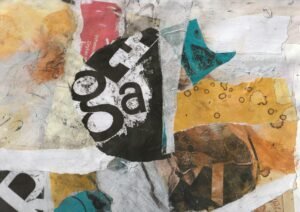
Sketchbooks.org | TIPS AND HACKS
Layered Media vs Mixed Media Art | What’s the Real Difference in Art Practice?
In the world of contemporary art, the terms layered media and mixed media are often used interchangeably—but they represent distinct approaches to creative process and material use. Understanding the difference between these two practices can...
Capturing Inspiration on the Go
Designers and illustrators must stay alert to emerging trends, and a sketchbook ensures valuable observations don’t go unnoticed.
Turning Observations into Strategic Design Choices
- Capturing a passerby’s fashion choices, an architectural detail, or unique color palettes builds a designer’s reference library.
- Rapid, informal sketches reinforce understanding of movement, form, and proportions, useful in industries like animation, fashion, and industrial design.
- Keeping a sketchbook during business trips or creative workshops allows professionals to document industry insights and refine ideas.
Sketchbooks help designers bridge the gap between inspiration and execution, ensuring they always have fresh material to work with.
Problem-Solving Through Iteration & Refinement
For commercial artists, every project presents technical and creative challenges. Sketchbooks allow them to test solutions, refine compositions, and optimize designs before finalizing client work.
Sketchbooks as Tools for Creative Problem-Solving
- Analyzing light and shadow placement improves product rendering and advertising visuals.
- Reworking layouts and adjusting proportions helps refine packaging, poster designs, and website interfaces.
- Experimenting with materials, color schemes, and typography ensures designs align with brand identity.
By using sketchbooks as a structured space for visual problem-solving, designers can iterate quickly and refine concepts effectively.
How Sketchbooks Benefit Commercial Artists and Designers
For commercial artists and designers, sketchbooks serve as essential tools for developing ideas, refining technical skills, and maintaining creative momentum in a competitive industry. Unlike personal sketchbooks used for casual exploration, a commercial artist’s sketchbook functions as a workspace for professional innovation, concept iteration, and problem-solving.
Encouraging Daily Practice for Consistent Creativity
In the world of design and commercial art, maintaining a consistent creative workflow is crucial. A sketchbook provides:
- A structured space to refine techniques and visual problem-solving skills.
- An efficient way to generate and iterate concepts for client projects.
- A dedicated outlet for rapid ideation, helping artists quickly explore new directions.
For commercial artists, sketching regularly keeps creativity sharp, ensuring they can respond to fast-paced industry demands with confidence.
Building Confidence in Idea Execution
A sketchbook provides a low-pressure environment to explore new styles, layouts, and design compositions before committing to final commercial pieces.
How Sketchbooks Strengthen Confidence in Professional Work
- Refining initial concepts before pitching designs to clients.
- Testing composition and typography choices for advertising, branding, or illustration projects.
- Exploring diverse techniques without disrupting client timelines, ensuring adaptability across projects.
By using sketchbooks as an experimental space, commercial artists build the confidence needed to execute creative ideas effectively within deadlines.
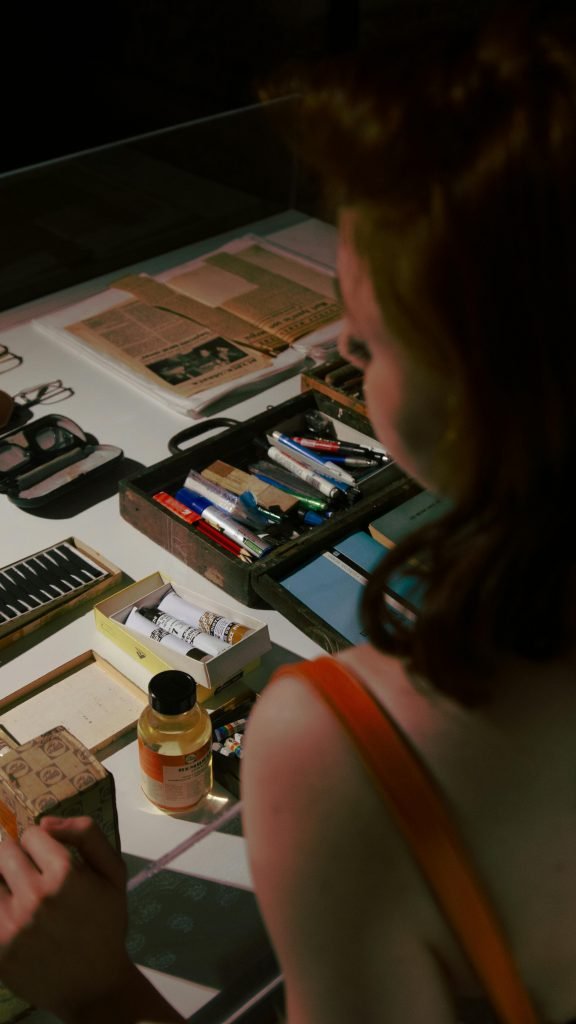
Preserving Unique Design Perspectives & Brand Identity
Every commercial artist and designer has a distinct creative voice, and their sketchbook becomes a visual record of their evolving style and approach.
Defining Artistic and Brand Identity
- Designers use sketchbooks to develop brand aesthetics, ensuring consistency across work.
- Concept artists refine signature techniques that set their work apart in competitive fields like entertainment design or advertising.
- Fashion designers maintain trend studies and garment iterations, allowing for seamless concept transitions.
Sketchbooks become archives of creative identity, ensuring commercial artists can articulate their visual language while adapting to industry trends and market needs.
A commercial artist’s sketchbook is more than a personal tool—it is a strategic asset for refining ideas, improving creative agility, and maintaining professional innovation. By integrating sketchbook practice into daily routines, artists and designers enhance efficiency, strengthen concept development, and continuously evolve within their creative industries.
Types of Sketchbooks and Their Uses for Designers
Sketchbooks are essential tools for designers, providing a space for idea development, concept refinement, and creative exploration. Depending on the medium and workflow, different sketchbook types serve unique purposes in professional design.
Traditional Paper Sketchbooks
A classic choice among designers, paper sketchbooks offer versatility and tactile engagement, making them ideal for brainstorming, freehand sketches, and physical texture studies.
Best Uses for Designers
- Thumbnail sketching: Quickly draft logos, layouts, and typography studies.
- Concept visualization: Ideal for product sketches, packaging designs, and branding elements.
- Mixed media experimentation: Can accommodate pencil, ink, and light watercolor washes for material testing.
Designers often prefer smooth or textured paper, selecting formats that align with their industry’s demands.
Digital Sketchbooks
With evolving technology, tablets and drawing apps have become indispensable tools for commercial designers. Digital sketchbooks offer flexibility, easy revisions, and direct integration into creative workflows.
Advantages for Commercial Design
- Layering & Editing: Digital sketching allows for non-destructive edits, crucial for refining concepts.
- Color Precision: Ideal for branding palettes, UI design, and fashion color forecasting.
- Quick Prototyping: Streamlines illustration, animation pre-visualization, and 3D modeling workflows.
Popular programs like Procreate, Adobe Fresco, and Clip Studio Paint enable designers to seamlessly transition from sketching to finalized artwork.
Specialty Sketchbooks
For industry-specific work, designers rely on specialized sketchbooks tailored to various media, ensuring optimal results for complex projects.
Types of Specialty Sketchbooks & Their Applications
- Watercolor Sketchbooks: Essential for fashion designers, illustrators, and fine artists exploring pigment studies.
- Toned Paper Sketchbooks: Helps refine contrast-heavy sketches, especially in advertising and comic book illustration.
- Grid/Graph Paper Sketchbooks: Preferred for architectural plans, industrial product design, and structural layouts.
These sketchbooks allow designers to work effectively with their preferred techniques, ensuring consistent creative output.
Choosing the right sketchbook depends on the designer’s workflow, industry, and medium preferences. Whether traditional, digital, or specialty, each type plays an integral role in shaping commercial designs. By selecting the ideal sketchbook, designers can enhance their efficiency, refine visual storytelling, and push creative boundaries.
Commercial Art Sketchbooks as a Source of Inspiration
Revisiting Past Work
For commercial artists, sketchbooks act as creative archives, storing past concepts, design iterations, and technical experiments.
How Past Work Fuels New Ideas
- Refining earlier layouts, compositions, or brand elements for updated projects.
- Revisiting sketches that didn’t make the final cut but could inspire new directions.
- Analyzing past techniques to repeat successful design strategies.
A well-maintained sketchbook allows designers to tap into past insights, transforming initial ideas into fresh commercial designs.
Documenting Growth in Professional Work
Sketchbooks serve as visual records, tracking how a designer’s style, technique, and efficiency evolve over time.
Why Tracking Progress Matters in Commercial Design
- Identifying shifts in creative trends, typography choices, or branding approaches.
- Recognizing improvements in illustration consistency, precision, and concept execution.
- Using past work to showcase development to clients or employers.
Flipping through old pages offers a clear reflection of growth, reinforcing professional confidence and strategic refinement in commercial artistry.
Sharing Stories Through Art & Design
Many commercial artists use sketchbooks to communicate narratives, whether through branding, campaign concepts, or illustrative storytelling.
How Sketchbooks Help Commercial Artists Capture Stories
- Developing advertising storyboards by mapping customer interactions with products.
- Recording market-inspired aesthetics, shaping future branding projects.
- Illustrating creative influences drawn from global design trends.
Sketchbooks serve as powerful storytelling tools, ensuring commercial artists can translate raw ideas into market-ready visuals.
The Importance of Sketchbooks for Professionals
A Portfolio of Ideas
For commercial artists and designers, a sketchbook serves as an informal portfolio, showcasing the raw, unfiltered creativity behind polished work.
Why Sketchbooks Matter in Professional Portfolios
- Clients appreciate seeing creative problem-solving in early sketches.
- Art directors and agencies value rough drafts that demonstrate conceptual thinking.
- A well-maintained sketchbook provides visual evidence of an artist’s range and adaptability.
Unlike finalized pieces, sketchbooks highlight the artistic thought process, making them a powerful asset in professional presentations.
Experimentation Without Boundaries
Professionals use sketchbooks to push creative limits, experimenting with new techniques, unconventional layouts, and unfamiliar styles that wouldn’t fit within commissioned work.
Sketchbooks as a Space for Creative Risk-Taking
- Testing different color palettes, typography treatments, and compositions outside structured projects.
- Exploring new artistic styles or blending media to expand creative versatility.
- Developing original ideas without market constraints, keeping creativity fresh.
Sketchbooks allow professionals to maintain artistic freedom, ensuring that innovation remains at the core of their work.
A Habit of Lifelong Learning
Even the most experienced designers and illustrators benefit from consistent sketching, reinforcing the belief that artistic mastery is an ongoing journey.
Why Professional Artists Continue Sketchbook Practice
- Strengthens technical skills, ensuring precision in commercial designs.
- Encourages self-reflection and creative evolution, adapting to trends.
- Supports ongoing exploration of new methodologies, formats, and design principles.
Sketchbooks aren’t just tools for practice—they’re essential for continuous artistic growth, keeping professionals adaptable and inspired.

Sketchbooks.org | SKETCHBOOK KINDS
People Use Their Sketchbooks in Unique Ways | Beyond the Page
Far More Than Blank Canvases for Drawing Sketchbooks are dynamic tools for experimentation, emotional processing, creative problem-solving, and personal storytelling. Sketchbooks in Unique Ways. While most think of them as spaces for sketches and figure...
Tips to Make the Most of Your Design Sketchbooks
Use Them Regularly
Consistency strengthens creativity and technical proficiency. Setting aside time for sketching ensures that ideas flow naturally when working on professional projects.
Ways to Maintain a Regular Sketching Habit
- Schedule dedicated sketching time—whether daily or weekly—to reinforce creative momentum.
- Integrate sketches into client brainstorming sessions to visualize early concepts.
- Keep a portable sketchbook readily available for spontaneous inspiration.
Even brief sketching sessions contribute to ongoing creative improvement.
Don’t Strive for Perfection
Sketchbooks should serve as experimental spaces, free from the pressure of perfection. Allowing room for mistakes encourages creative growth.
Why Imperfection Helps Creativity
- Refining ideas in a low-pressure environment enhances problem-solving skills.
- Unpolished sketches capture raw energy that might be lost in final designs.
- Mistakes lead to unexpected discoveries, pushing creative boundaries forward.
Embrace the process over the result, and let sketchbooks remain flexible creative spaces.
Experiment with Different Techniques
A sketchbook provides an opportunity to explore varied artistic approaches, helping designers stay adaptable in commercial projects.
Techniques to Explore
- Mixed media: Combine ink, graphite, markers, and watercolor for diverse effects.
- Typography studies: Sketch hand-lettered concepts to refine branding skills.
- Composition exercises: Test layouts for advertising, packaging, and editorial work.
Experimentation keeps design work fresh, allowing for new stylistic discoveries.
Personalize Your Sketchbook
A sketchbook should feel uniquely tailored to your workflow, acting as an extension of your creative identity.
Ways to Make It Your Own
- Decorate the cover with sketches, stickers, or paint to enhance its individuality.
- Add notations, captions, or annotations alongside drawings for better context.
- Organize pages into sections for concepts, client work, or material testing.
Personalizing a sketchbook strengthens creative engagement, making it an invaluable tool in a designer’s process.
Conclusion
Sketchbooks are essential tools for commercial artists and designers, offering space for innovation, experimentation, and professional growth. They serve as platforms for refining ideas, documenting progress, and pushing creative boundaries, making them indispensable in design and illustration industries.
Whether developing branding concepts, fashion sketches, advertising layouts, or product designs, a sketchbook remains a vital resource for translating raw ideas into commercial success. Keeping one integrated into daily workflows ensures continuous evolution, helping professionals stay competitive, inspired, and adaptable in fast-changing markets.
Ready to Share Your Work?


